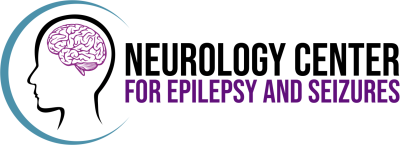Is your child struggling in school despite additional support or interventions? Academic challenges can sometimes…

Migraines vs. Tension Headaches: How to Differentiate and Diagnose
Headaches are a common health complaint. They can range from a minor nuisance to a debilitating condition.
Understanding the type of headache you’re experiencing is crucial. It can guide you towards the most effective treatment and relief strategies.
In this article, we’ll focus on two primary types of headaches: migraines and tension headaches. These are often confused due to overlapping symptoms.
We’ll delve into the unique characteristics of each, helping you differentiate between them. We’ll also discuss the diagnostic process for each type.
Our goal is to empower you with knowledge. This can help you manage your symptoms and seek appropriate medical attention when necessary.
Understanding Headaches: A Brief Overview
Headaches are a prevalent health issue. They affect nearly everyone at some point in their lives.
They can be classified into different types based on their causes and symptoms. Understanding these types is key to effective headache diagnosis and treatment.
Identifying Your Headache Type
Headaches can be broadly categorized into two types: migraines and tension headaches. Each type has distinct symptoms and triggers.
Migraines are often characterized by a throbbing pain on one side of the head. They may also be accompanied by other symptoms such as sensitivity to light and sound, nausea, and visual disturbances.
On the other hand, tension headaches typically present as a constant, dull ache on both sides of the head.
- Migraines: Throbbing pain, sensitivity to light and sound, nausea, visual disturbances
- Tension headaches: Constant, dull ache on both sides of the head
Migraine Headaches: Symptoms and Diagnosis
Migraine headaches are a common type of headache. They are often severe and can significantly impact daily life.
The primary symptom of a migraine is a throbbing or pulsating pain on one side of the head. This pain can last for hours or even days. Other symptoms may include nausea, vomiting, and extreme sensitivity to light and sound.
Diagnosing migraines involves a thorough medical history and physical examination. In some cases, imaging tests like MRI or CT scans may be necessary.
Tension Headaches: Symptoms and Diagnosis
Tension headaches are the most common type of headache. They are often described as a feeling of a tight band around the forehead or at the back of the head.
Unlike migraines, tension headaches do not cause nausea or vomiting. They also do not cause sensitivity to light and sound. However, they can still be debilitating and interfere with daily activities.
Diagnosis of tension headaches also involves a detailed medical history and physical examination. In some cases, additional tests may be required to rule out other conditions.
Migraines vs Tension Headaches: Differentiation
Differentiating between migraines and tension headaches is crucial for effective treatment. While both types of headaches can cause significant discomfort, they have distinct characteristics and triggers.
Migraines are typically characterized by a throbbing or pulsating pain on one side of the head. They are often accompanied by other symptoms such as nausea, vomiting, and sensitivity to light and sound.
On the other hand, tension headaches usually present as a constant, dull ache on both sides of the head and do not have the additional symptoms seen in migraines.
- Migraines: Throbbing or pulsating pain, often on one side, nausea, vomiting, sensitivity to light and sound
- Tension headaches: Constant, dull ache on both sides of the head, no additional symptoms like nausea or sensitivity to light and sound
Common Triggers and Causes
Understanding the triggers and causes of headaches can help in their management. Both migraines and tension headaches have specific triggers, although there can be some overlap.
Migraines are often triggered by factors such as stress, certain foods, hormonal changes, and sensory stimuli. Tension headaches, on the other hand, are commonly triggered by stress, poor posture, and muscle strain.
It’s important to note that triggers can vary greatly from person to person.
Migraine triggers: Stress, certain foods, hormonal changes, sensory stimuli
Tension headache triggers: Stress, poor posture, muscle strain
When to See a Doctor
Headaches are a common ailment, but sometimes they can indicate a more serious condition. If your headaches are severe, persistent, or accompanied by other symptoms, it’s time to seek medical attention.
Symptoms that warrant a doctor’s visit include fever, stiff neck, sudden onset of pain, or changes in vision or speech.
Diagnostic Process for Headaches
The process of diagnosing headaches involves several steps. It starts with a thorough medical history and physical examination.
A healthcare professional will ask about your symptoms, their frequency and duration, and any potential triggers. They may also inquire about your lifestyle, diet, and stress levels.
Medical History and Physical Examination
The medical history is a crucial part of the headache diagnosis. It helps to identify any underlying conditions or risk factors.
During the physical examination, the doctor may check your blood pressure, perform a neurological examination, and examine your head and neck.
Advanced Diagnostic Techniques
In some cases, advanced diagnostic techniques may be necessary. These can include imaging tests like MRI or CT scans.
These tests can help rule out other conditions that might be causing your headaches, such as a brain tumor or aneurysm.
Treatment Options for Headache Relief
There are various treatment options available for headache relief. These can be broadly categorized into non-pharmacological and pharmacological treatments.
The choice of treatment depends on the type of headache, its severity, and the individual’s overall health status.
- Non-pharmacological treatments
- Pharmacological treatments
Non-Pharmacological Treatments
Non-pharmacological treatments include lifestyle changes, stress management techniques, and physical therapy. These can be effective in reducing the frequency and severity of headaches.
Relaxation techniques such as yoga and meditation can also be beneficial. They help to manage stress, a common trigger for both migraines and tension headaches.
Pharmacological Treatments
Pharmacological treatments involve the use of medications. These can include over-the-counter pain relievers, prescription drugs, and in some cases, preventive medications.
It’s important to use these medications as directed by a healthcare professional. Overuse can lead to rebound headaches, a condition where the headache returns as the medication wears off.
Preventive Measures and Lifestyle Changes
Preventive measures and lifestyle changes can play a significant role in managing headaches. These measures aim to reduce the frequency and severity of headaches and improve overall quality of life.
- Regular exercise
- Balanced diet
- Adequate hydration
- Regular sleep patterns
- Stress management techniques
- Avoiding known triggers
Regular exercise can help reduce tension and improve overall well-being. A balanced diet, adequate hydration, and regular sleep patterns can also contribute to headache prevention.
Stress management techniques such as relaxation exercises, deep breathing, and yoga can help manage stress levels. Avoiding known triggers, such as certain foods or sensory stimuli, can also be beneficial.
Conclusion: Managing Headaches Effectively
Understanding the differences between migraines and tension headaches is crucial for effective management. By recognizing the symptoms and triggers, individuals can seek appropriate treatment and implement preventive measures.
Remember, persistent or severe headaches should always be evaluated by a healthcare professional. Don’t hesitate to seek help from us at the Neurology Center today!



